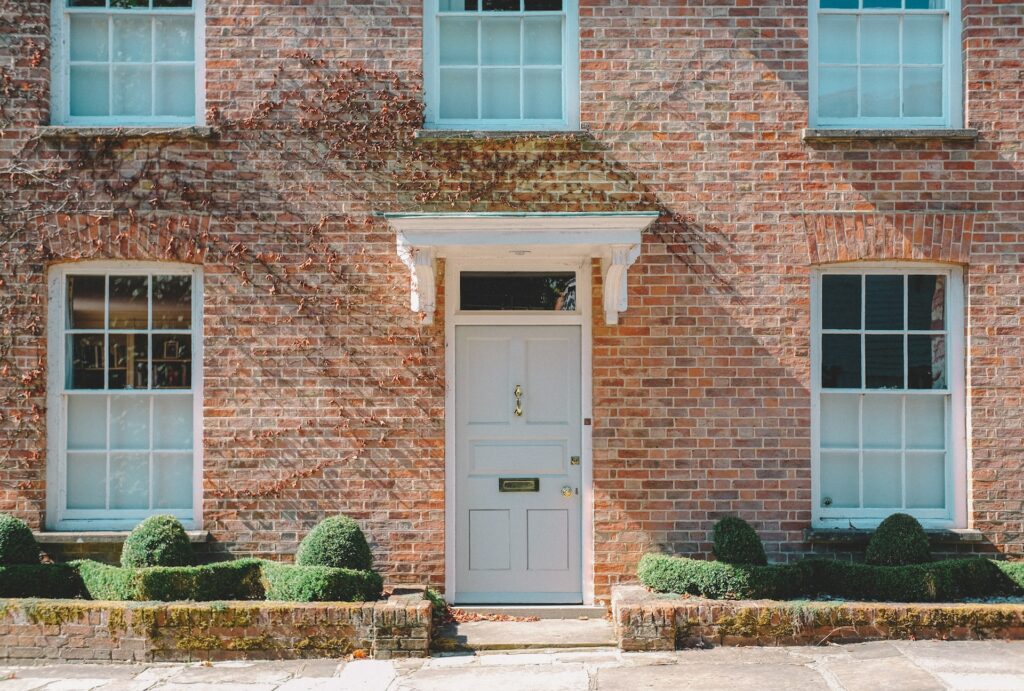Underpinning is vital for reinforcing your home’s foundations to remedy any previous structural issues or to reinforce the structure of the home prior to a property extension. Understanding whether your home is underpinned or not ensures you’re aware of its structural history and potential vulnerabilities. Before offering final terms, any high-value home insurance provider will want to know about the property history, including details of previous underpinning and subsidence.
In this article, we discuss how to spot the signs that your home might need underpinning, the process involved, the required certifications, and why having a solution which includes the peril of subsidence, ground heave and landslip is important.
Signs and reasons for underpinning
Examining your high-value home (to discover whether you qualify for high-value home insurance) can help reveal signs of foundation issues, which could confirm whether your home needs underpinning.
By understanding these signs, homeowners can address the problems quickly and protect the structure of their property. They can then consider getting underpinned house insurance and a structural adequacy certificate. Here we list some example indicators, but we suggest a professional check would be required to establish if there is any issue:
- Visible cracks in interior walls, particularly around doors and windows, may suggest foundation movement. Horizontal cracks require immediate attention.
- A noticeable slope in the flooring or uneven surfaces can suggest foundation settlement. These issues can lead to further structural damage and compromise safety if left unattended.
- If you have trouble opening or closing doors and windows or find gaps around these fixtures, your home may have foundation problems. As the foundation moves, the building can become uneven.
- Cracks in the basement walls are an early sign of foundation issues. They often occur because of soil movement or pressure. A thorough inspection can evaluate the seriousness of the issue.
- The composition and behaviour of the soil beneath a home may affect its stability. For example, expansive clay soils can contract and expand as moisture levels change. This puts pressure on the foundation and causes shifts.
- Inadequate construction methods or using inferior materials contributes to foundation problems over time. Homes built on shallow foundations or without the proper reinforcement are more vulnerable.
- Excessive water around the foundation, whether due to poor drainage or plumbing leaks, erodes the soil or causes it to swell. This impacts the foundation’s stability. Waterproofing and addressing drainage problems are essential preventive measures.
- Trees with expansive root systems too close to the home can contribute to foundation issues. The roots absorb moisture, leading to soil shrinkage and settlement
- Earthquakes, floods, or other natural disasters also cause significant ground movement and affect a home’s foundation. Although these events are beyond human control, underpinning your home’s foundation is essential in disaster-prone areas.

What is underpinning?
The process of underpinning a home involves tactically reinforcing or extending the foundation, redistributing the load, and preventing further settlement. It’s a thorough procedure that requires precision and expertise. Underpinning takes place to protect the property from any future risk of any movement. There are several ways of doing this:
- Traditional underpinning involves digging below sections of the existing foundation and using concrete to create additional support. It’s a reliable but laborious process that is suitable for a variety of soil types.
- The pile method of underpinning introduces deep structural elements, known as piles, beneath the existing foundation. Then, a prefabricated cage is installed, spanning across the two piles. This method provides enhanced support and is preferable in areas experiencing challenging soil conditions.
- Mini piling employs smaller piles and is suitable for confined spaces with limited access. It’s an adaptable technique that minimises disruption to the surrounding landscape.
- Another option is jet grouting, which involves injecting a cement-based mixture into the soil to create a reinforced column. This method is effective in stabilising loose or sandy soils.
Structural engineers will always carry out a thorough assessment of the foundation issues. This includes analysing the soil and evaluating the structural integrity, after which they recommend suitable underpinning methods. While knowing about these methods is applicable, you can rely on professionals to know which is best.
Once the assessment is complete, engineers work with architects to design the underpinning solutions. This includes determining the depth and placement of the underpinning elements and ensuring that they meet safety standards and local regulations. Throughout the process, structural engineers oversee the work to ensure adherence to the design specifications. Their expertise ensures that the foundation receives the necessary reinforcement without compromising the structural integrity.
How long does it take to underpin a high value house?
The duration of this work varies and depends on several factors, such as the chosen method, the size of the project, and the level of damage. Some projects may take a few weeks, while others could extend to several months.
Can you live in a house while it is being underpinned?
It’s possible to live in a house that is being underpinned. However, it depends on the amount of work that needs to be done. Smaller structural repairs will make the home more liveable than bigger repairs. You can discuss this with the professionals who assess and carry out the work. It may be safer and more comfortable to find temporary accommodation while the bulk of the work is completed.
Underpinning certifications and regulations
Recognised certifications ensure that the individuals overseeing or carrying out the underpinning projects have taken part in extensive training, have up-to-date knowledge of the procedures, and will follow the industry’s best practices.
Local and national regulations are there to protect the structure of the property, and the safety of homeowners. Typically, requirements include compliance with building codes, zoning regulations, and environmental standards. The necessary permits should be obtained from local authorities.
Following the completion of the work, requesting a Certificate of Structural Adequacy and a certificate that formally confirms completion will show that the work has been inspected and approved by professionals.
The homeowner’s responsibilities
Preventing the need for underpinning, if possible, is a better option, as the process can be costly and time-consuming. Homeowners may be unable to control many factors, but they can take some proactive measures.
They can conduct routine inspections, paying close attention to signs of foundation issues such as cracks, uneven floors, or sticking doors and windows. Spotting these early can prevent minor issues from escalating into significant structural problems. A structural engineer’s subsidence report can also bring these to light.
For example, keeping the soil around the home’s foundation evenly moist can prevent excessive drying or swelling, which can cause foundation movement. You can also ensure that downspouts direct water away from the foundation to avoid pooling and soil erosion.
If trees and shrubs are close to the foundation, they can extract moisture from the soil, affecting its stability. This can be avoided with regular pruning and care. In some cases, trees may need to be obliterated.
Financial planning is also essential. Homeowners should prepare for potential work, such as underpinning, by setting aside funds for repairs. Setting aside some savings for home maintenance can reduce the financial impact of unexpected foundation issues.
When hiring professionals for maintenance or addressing potential underpinning requirements, homeowners should be diligent. Choosing experienced, reputable contractors or structural engineers is crucial, and looking at some structural report examples online is recommended to become more familiar with the process. This can be done by seeking recommendations, checking credentials, and verifying references. These measures ensure that the hired professionals have the expertise to assess and fix any structural problems. You can request a Structural Adequacy Certificate when they’ve completed the work.
Do I need specialist insurance for an underpinned house?
Underpinning projects can come with increased risk, making insurance coverage much more important to consider. While standard homeowners’ insurance provides essential protection, it doesn’t cover the specific problems that can occur during and after underpinning.
As underpinning involves altering a home’s foundation to enhance stability, standard policies rarely cover damages or issues linked to these repairs. This can leave homeowners financially worse off.
There is a way to avoid this. Homeowners can look at specialist underpinned house insurance that is tailored for underpinned properties. Stanhope’s subsidence insurance is designed for homeowners who may have previously had structural issues with their homes. This can provide peace of mind that any future problems will be managed financially.
When choosing your insurance, be sure to check what is covered. This may include any structural defects that emerge during or after the underpinning project or damage to the property’s foundation, walls, and other structural parts. You may also want to consider a policy that covers damages caused by subsidence or ground movement, as these issues often lead to homes needing underpinning.
Homeowners should also carefully review policy exclusions, limitations, and deductibles, ensuring they understand what’s covered and are prepared for any potential out-of-pocket expenses.
Specialist insurance for underpinned houses
Get in touch with our team of experts to ask us any questions about your underpinned home, and make sure that your property is covered.

